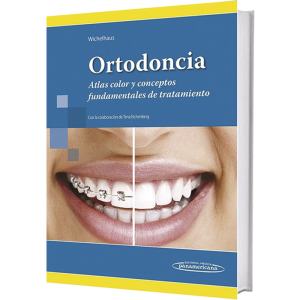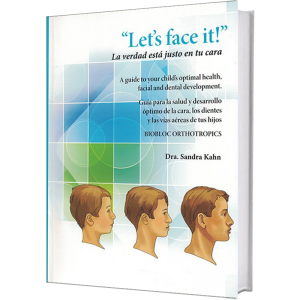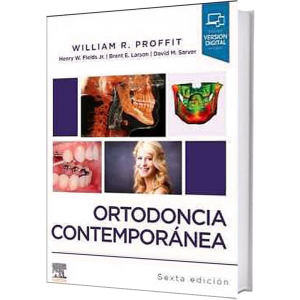Descripción
(Inglés)
Author Information:
Dr. Samuel Berkowitz, an orthodontist, was a Clinical Professor of Pediatrics and Surgery associated with the South Florida Craniofacial Anomalies Program at the University of Miami School of Medicine. He was also Adjunct Clinical Professor at Nova Southeastern University College of Dentistry – Orthodontic Department, and Adjunct Clinical Professor of Orthodontics at the University of Illinois College of Dentistry. His main goal is to develop teaching materials in cleft palate for professionals in plastic and oral surgery, orthodontics, and speech language pathology. He is a past President of the American Cleft Palate Association Educational Foundation, and the Florida Cleft Palate Association, and was President of the Miami Craniofacial Anomalies Foundation. Dr. Berkowitz was active in the American Association of Orthodontics, Florida Cleft Palate Association, and The Edward Angle Society of Orthodontists. He has published widely in medical and cleft palate journals and is the author of Volume I and the editor of Volume II of Cleft Lip and Palate Perspectives In Management – First Edition; he coauthored Plastic Surgery of the Facial Skeleton with S.A Wolfe, M.D, and wrote The Cleft Palate Story for parents of a child born with a cleft. Dr. Berkowitz is a popular speaker on cleft lip/palate topics and has presented many workshops and seminars in the USA and abroad.
His research interest focused on improving surgical-orthodontic treatment planning for cleft lip and palate children as well as those with other craniofacial anomalies. Dr. Berkowitz was project director of a clinical research program that was studying the long-term effects of various surgical treatment procedures on palatal and facial growth and development. He created a quantitative method for determining when to close the palatal cleft space, based on the 10% ratio of the cleft space to the area of the surrounding palatal surface medial to the alveolar ridges. He has created an audiovisual Power-Point lecture series for surgeons and orthodontists to enable them to better understand and teach others the effects of surgery on the face from birth through adolescence.
Dr. Berkowitz has been awarded the title “Honoree” by the Edward Angle Society of Orthodontists, and “Honoree” by the First World Congress of the International Lip and Palate Foundation for his many contributions to the field of cleft lip and palate treatment. His extensive serial clinical records of dental casts, lateral cephaloradiographs, facial and intraoral photographs, and panorexes are in the National Museum of Health and Medicine (associated with Walter Reed Hospital’s Institute of Pathology in Washington D.C), where they will be available for continued study.
Description:
Reviews treatment concepts in all areas of cleft involvement, based on longitudinal facial and palatal growth studies
Explains how all treatment goals – good speech, facial aesthetics, dental occlusion, and psychological development – may be realized
Written by an international team of experienced clinicians
Revised and updated edition, with several new chapters
Cleft Lip and Palate: Diagnosis and Management is an unparalleled review of treatment concepts in all areas of cleft involvement presented by an international team of experienced clinicians. A unique feature of the book is that it largely consists of longitudinal facial and palatal growth studies of dental casts, photographs, panorexes, and cephalographs from birth to adolescence. Throughout the discussion of growth and treatment concepts, the importance of differential diagnosis in treatment planning is underscored. The underlying argument is that all of the treatment goals – good speech, facial aesthetics, dental occlusion, and psychological development – may be realized without the need to sacrifice one for another.
In this third edition, further successful physiological treatment protocols are considered and the occurrence and prevention of relapses after some surgical treatments are discussed; again, all solutions are backed up by follow-up records. Additional topics not previously covered include strategies for coping with psychological effects on patients and intra-team conflict, the excellent clinical work being undertaken in Asia, and future multicenter palatal growth studies. It is the editor’s hope that, by drawing on the wealth of experience contained in the book, clinicians will be better able to evaluate current treatment practices and concepts and to improve planning of their own treatment procedures.
Table of Contents:
Part I Facial Embryology and Neonatal Palatal Cleft Morphology
Embryogenetics of Cleft Lip and Palate
The Value of Longitudinal Facial and Dental Casts Records in Clinical Research and Treatment Analysis
Facial and Palatal Growth
Part II Types of Clefts
The Effect of Clefting of the Lip and Palate and the Palatal Arch Form
Alternative Method Used to Correct Distorted Neonatal Cleft Arch Forms
Complete Unilateral Cleft of the Lip and Palate
Complete Bilateral Cleft Lip and Palate
Lip Pits: Orthodontic Treatment, Dentition, and Occlusion – Associated Skeletal Structures
Part III Facial Growth in Cleft Palate Children
Characteristics of Facial Morphology and Growth in Infants with Clefts
A 25-Year Longitudinal Facial Growth Study of Unilateral Cleft Lip and Palate Subjects from the Sri Lankan Cleft Lip and Palate Project
Airway Management in Patients with Robin Sequence
Pierre Robin Sequence
Part IV Audiology/Otology
Management of Otopathology and Hearing Loss in Children with Cleft Palate and Craniofacial Anomalies
Part V Effects of Surgery and How It Was Utilized
Palatal Wound Healing: The Effects of Scarring on Growth
Facial Growth Related to Surgical Methods
Part VI Lip and Palate Surgery: Millard–Berkowitz Protocol
The Influence of Conservative Surgery on Growth and Occlusion
Choosing the Best Time for Palatal Surgery
Part VII Another Tested Good Surgical Procedure
Two-Stage Palatal Surgery with Early Veloplasty and Delayed Hard Palate Repair: A Balanced View on Speech and Midfacial Growth Outcome
Part VIII Facial Growth: Time Is the Patient’s Ally
Management of the Premaxilla/Maxilla in Bilateral Cleft Lip and Palate
Part IX Presurgical Orthopedics
Neonatal Maxillary Orthopedics: Past to Present
A Comparison of the Effects of the Latham–Millard POPLA Procedure with a Conservative Treatment Approach on Dental Occlusion and Facial Aesthetics in CUCLP and CBCLP
Part X Midfacial Orthodontic/Orthopedic and/or Surgical Changes
Protraction Facial Mask
Protraction Facial Mask for Early Correction of Midfacial Retrusion: The Bergen Rationale
LeFort I Osteotomy
Part XI Orthognathic Surgery
Cleft Jaw Deformities and Their Management
Secondary Bone Grafting of Alveolar Clefts
The Need for Differential Diagnosis in Treatment Planning
Part XII Distraction Osteogenesis
Rigid External Distraction: Its Application in Cleft Maxillary Deformities
Remodeling the Mandible by Distraction Osteogenesis
Management of Maxillary Deformities in Growing Cleft Patients
Preventing Relapse Following Distraction Osteogenesis for the Cleft Midface in Adults
Part XIII Speech
Diagnostic Procedures and Instruments Used in the Assessment and Treatment of Speech
Variations in Nasopharyngeal Skeletal Architecture
The Velopharyngeal Mechanism
Surgical Management of Velopharyngeal Dysfunction
Velopharyngeal Dysfunction Management Algorithms
Optimal Age for Palatoplasty to Facilitate Normal Speech Development: What Is the Evidence?
Speech, Language, and Velopharyngeal Dysfunction: Management Throughout the Life of an Individual with Cleft Palate
Prosthetic Speech Appliances for Patients with Cleft Palate
Palatal Lift Prosthesis for the Treatment of Velopharyngeal Incompetency and Insufficiency
Part XIV Third World Cleft Treatment
Cleft Palate Treatment in Developing Countries of Africa
Birthing and Building Nascent Cleft Teams in Developing Countries
Challenges in Cleft Care in Underdeveloped Countries
Part XV Psychological/Team Function
Examining the Team Process: Developing and Sustaining Effective Craniofacial Team Care
Living with a Cleft: Psychological Challenges, Support and Intervention
Managing Teasing and Bullying
Part XVI Multicenter Clinical Reports
Eurocleft and Americleft Studies: Experiments in Intercenter and International Collaboration
Part XVII Recording Patient Orthodontic/Surgical Findings
Berkowitz Recording Patient Information Form
Part XVIII The Patient’s World
Social, Ethical, and Health Policy Issues in the Care of Children with Major Craniofacial Conditions

 Inglés
Inglés


Valoraciones
No hay valoraciones aún.